Phan Thiet
How to travel to Phan Thiet for your best experience
Phan Thiet Travel Guide – What to do, when to visit, and more…
200km north of Ho Chi Minh City is Phan Thiet, the city owning one of the most dynamic and beautiful beach towns in Vietnam – Mui Ne, which is undoubtedly preferred by the extreme travelers from all over the world. Travelers come here for a local experience tour, discover magnificent sight-seeing, or just for some fun relaxing nights next to the beach. If you are keen on visiting the place, let’s have some ideas of how to travel to Phan Thiet for your best experience on this article.
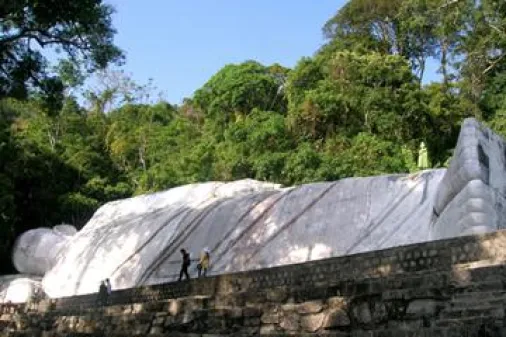
Ta Cu Mountain
The focal point of the mountain is the spectacular statue of Buddha entering a state of paranirvana,...
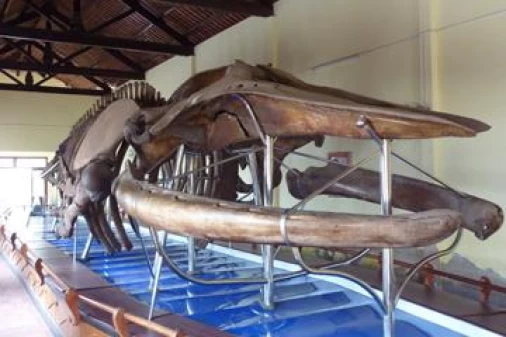
Thuy Tu Temple
Thuy Tu Temple.This temple was built in 1762 to honour a legendary whale, which was believed to save...

White Sand Dunes
A favourite photo opportunity spot for couples and pop music moguls in Vietnam. Countless music videos...
Frequently asked questions
Mui Ne Beach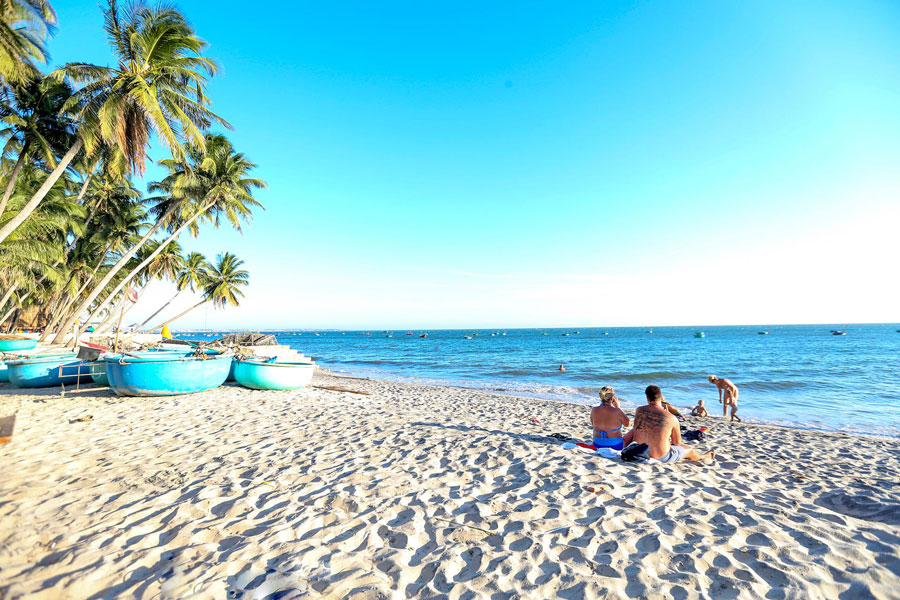
Mui Ne is Phan Thiet’s most prominent coastal resort town, spanning 15 kilometres of golden soft sandy beaches. Great for experiencing both daily life of the locals and enjoying activities on the beach, tourists can find a picturesque view of the traditional fishing village from the northern area, or play some favorite sports such as swimming, kitesurfing, kayaking, and surfing at the southern area of Mui Ne Beach. Thanks to its rock-free waters, Mui Ne Beach is ideal for these types of activities.
Mui Ne Fishing Village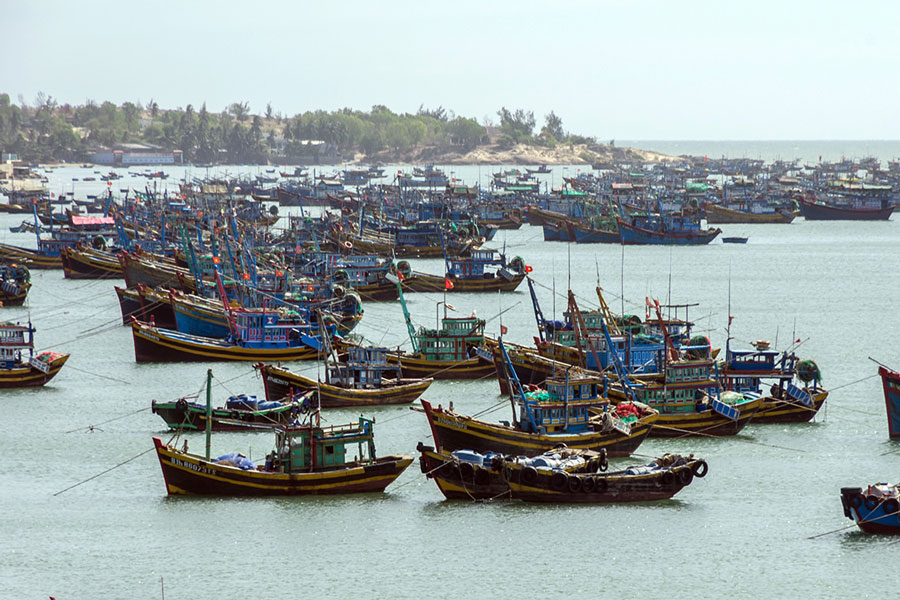
Set at the northern end of Mui Ne Bay, the Fishing Village offers a splendid view of an expansive coastline lined with swaying palm trees and colourful fishing boats moored on the water. Also, this is a great place to witness local life and enjoy fresh seafood. If you have a thirst for seafood, just feel free to buy fresh crabs, shellfish, etc., from local vendors and take them away or ask them to cook for you at a super budget price compared to buying from the market. Walking further into the village, you can give your eyes a great feast with the picture of locals meticulously making fish sauce or drying fish. Besides, the feeling of refreshment as drinking coconut water with the shining smiles of locals will make you love nature and locals more than ever before.
Fairy Stream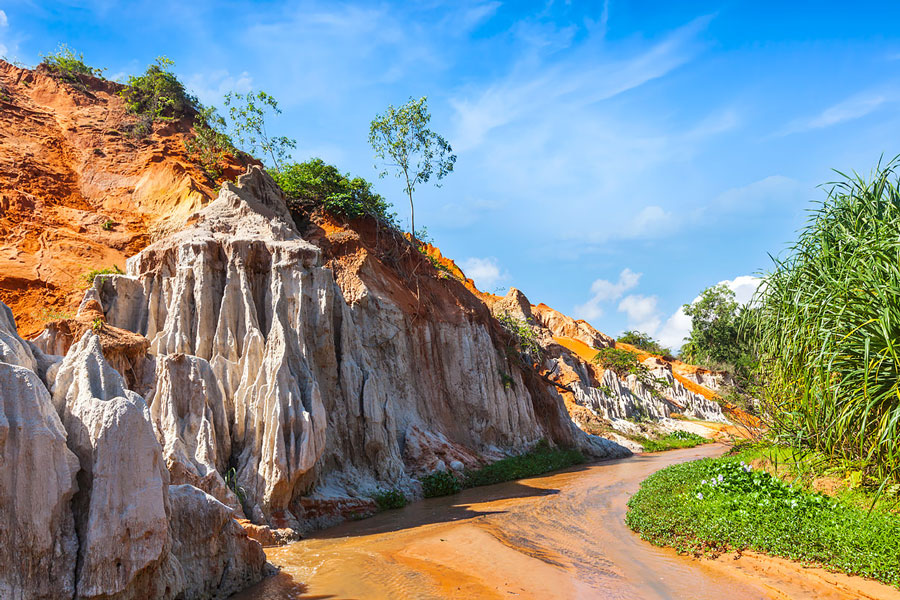
Unlike any other streams of Vietnam, the Fairy Stream has a special orange-red color thanks to the sand dunes nearby. Walking along the bank, soaking feet in the spring wherein countless stalactites in distinctive shapes, you will be intrigued by the feeling of refreshment while enjoying the beautiful scene of wild yellow flowers, violet hyacinth stems and birds chirping around. Additionally, extreme travelers can climb upon the sand dunes and pitted rock formations. The adventurous activities will provide travelers with magnificent views of the red-colored stream with complicated stalagmites.
Poshanu Cham Tower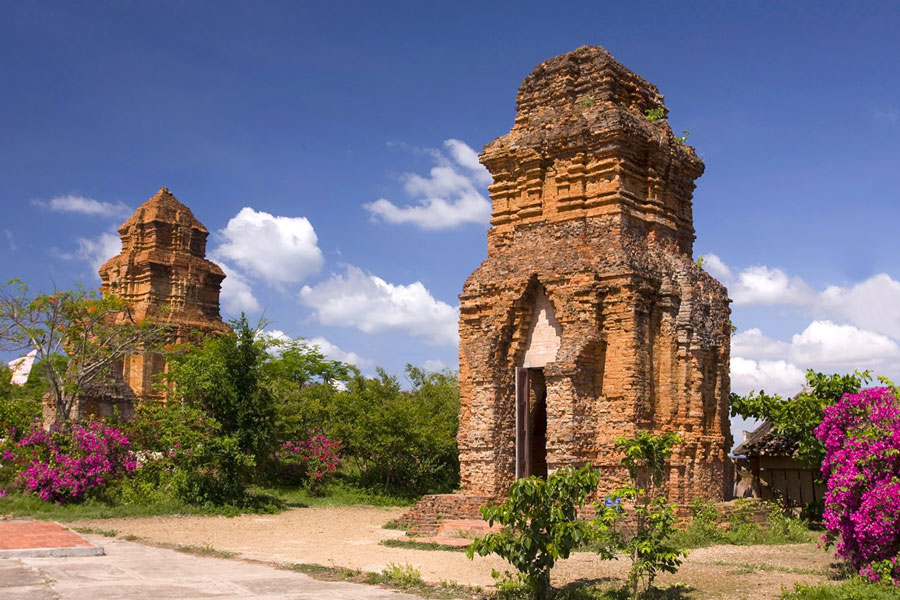
Located on the top of Ong Hoang Hill, about 7 km northeast of Phan Thiet, Poshanu Tower is one of the most important remains of Cham culture since the 8th century. Despite having a small size, the tower still proves its brilliance, attracting many tourists across the world. The towers have Cham’s authentic red-orange hue, which suit perfectly to the green of nature and Phan Thiet’s blue sky. Thanks to the hilltop location, tourists who come to Po Shanu Cham Towers can enjoy the wide views of the coastline or Phan Thiet city while learning about cultural and historical values of such a holy place.
Hon Rom Island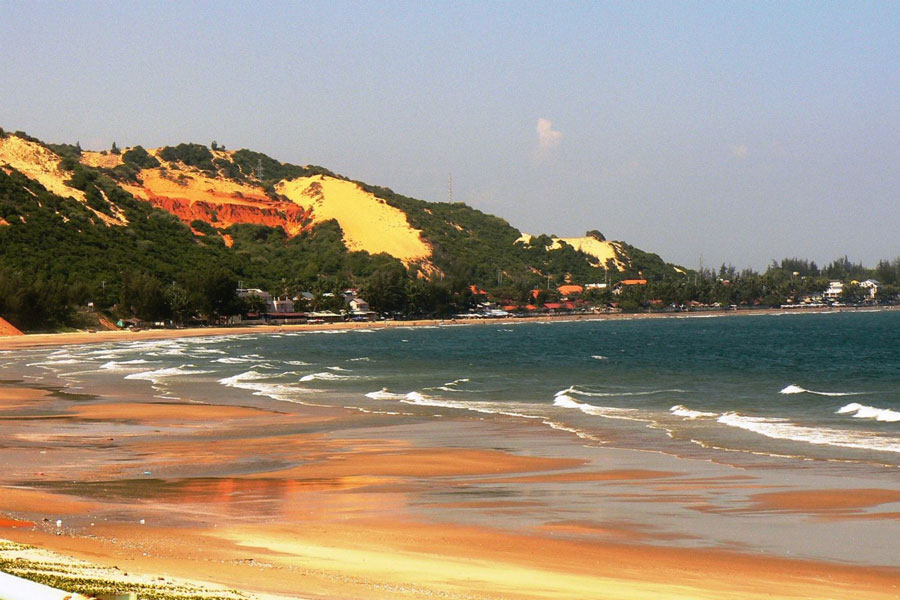
Hon Rom, famous for gorgeous landscapes, is considered one of the most popular tourist attractions in Mui Ne. The island has its name originating from the shape of itself from a distance. In dry season, straw on the island turns yellow at once, making the whole island look like a giant pile of straw (straw in Vietnamese means “Rom”). Hon Rom also manifests its beauty in the pristine seashores in the southwest coast and stones with various shapes lying peacefully in the east coast. Gazing westward from the island, you can see sand dunes hidden behind bushes and cactuses. They all highlight the charm of nature on the island and entirely contribute to the magnificence of Phan Thiet.
Mui Ne Flying Sand Dune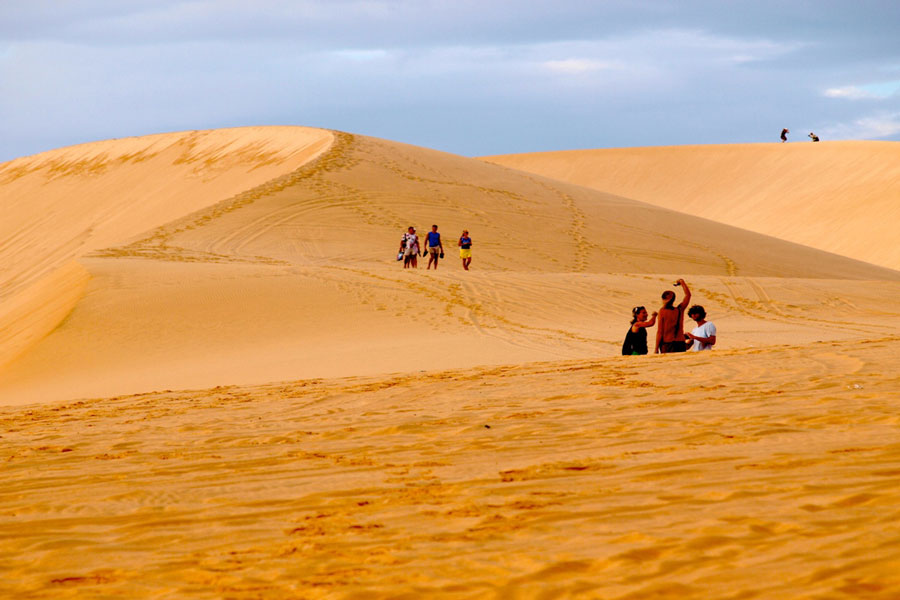
Stretching an area of over 50 hectares, Flying Sand Dune is a second-to-know masterpiece of Mui Ne for sightseeing and sport playing. From the top of the dunes, you can peer down far-reaching views covered with turquoise water of the sea and sparkling sand under the glorious sunshine. If you wish to try, you can easily hire a plastic board to enjoy thrilling moments while performing your cool sliding skills. The destination now attracts not only travelers but also photographers who are inspired by nature’s hidden charm.
White Lake – Lotus Lake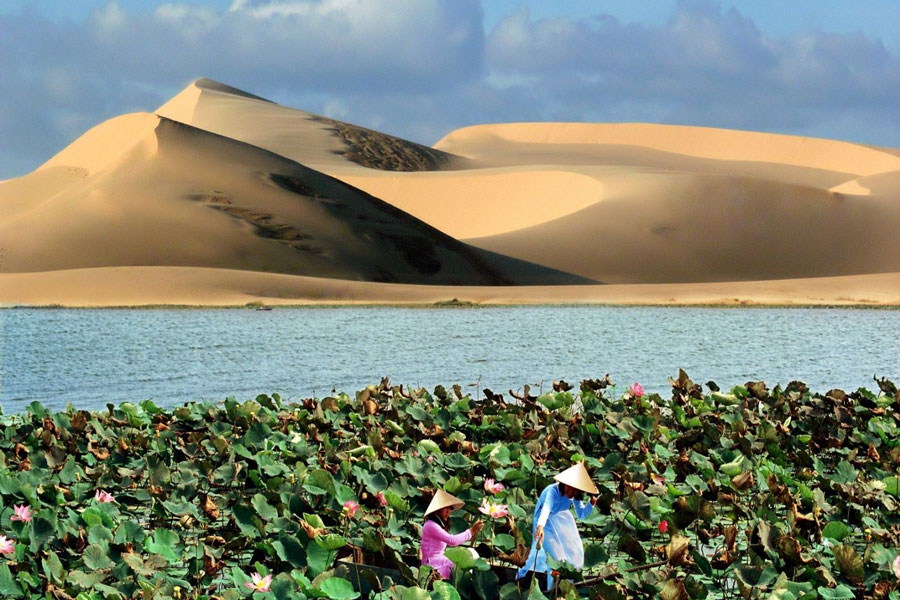
65 km away from Phan Thiet, White Lake and Lotus Lake are simple sketches of the pure beauty of nature. It is not hard to recognize the lake from a distance thanks to its crystal-clear water mixed perfectly with the green ecosystem around. White Lake also has another name which is Lotus Lake because when it comes to a specific time of the year, the lake will be covered with beautiful aromatic lotus blossoms and become home to different types of freshwater fish. You can rent a small boat and enjoy fishing while exploring the beauty here at your own pace. Along the bank of the lake are rows of casuarina trees which greatly cool down the heat from sand dunes around.
Ta Cu Mountain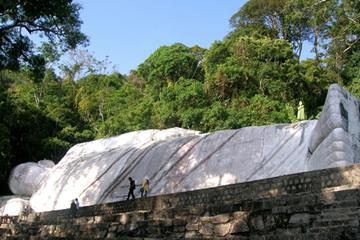
Comprising 250,000 square metres of lush rainforests, rare wildlife, limestone caves, and ornate Buddhist structures, Ta Cu Mountain can be reached by a two-hour hike through the verdant rainforest, in which visitors need to climb a rather steep stairway followed by a winding footpath, or by a 10-minute cable-car ride to reach the top of the mountain while you can enjoy the vertigo-inducing views of Thuan Nam Town, Ham Thuan An Sea, and Ke Ga Lighthouse, as well as rice paddies and dragon fruit tree.
Set atop Ta Cu Mountain, Linh Son Truong Tho Pagoda features several worship halls, three entrance pillars, intricate animal sculptures, primogenitor caves, and colourful paintings of deities. Built in 1879, its main attraction is a 49-metre-long statue of a reclining Buddha that’s hailed as the biggest of its kind in Vietnam.
If you are the first-timer visiting Phan Thiet, we suggest a 2D1N itinerary for you to experience the most of what Phan Thiet can offer.
Day 1: Mui Ne Beach – Mui Ne Fishing Village – Mui Ne Flying Sand Dune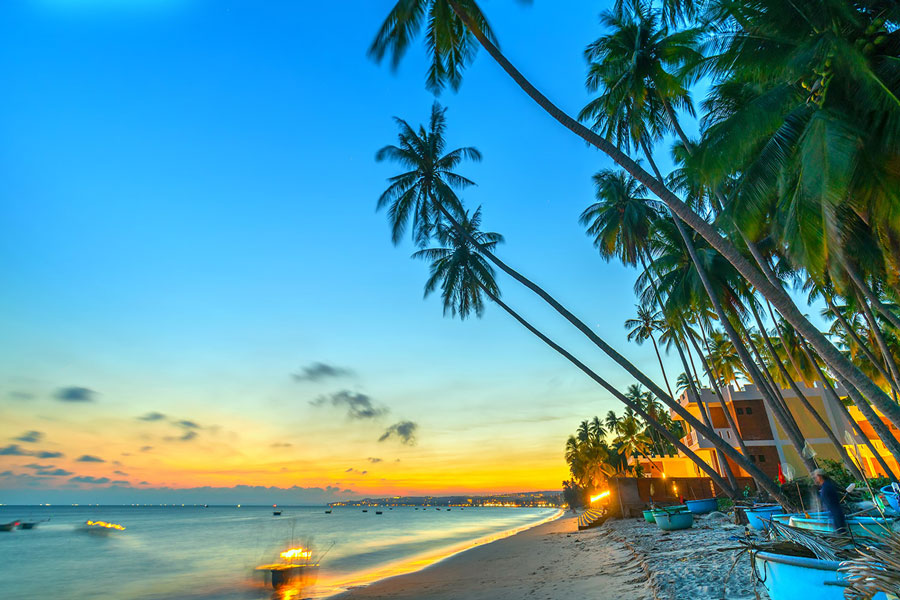
AM: Arrive at Mui Ne Bay early morning to enjoy the fresh air and mild sunlight. Visit the Fishing Village to experience local lives and play exciting sports by the beach. Have lunch at some beachside restaurant for a great seafood appetite.
PM: Move to the Flying Sand Dune to witness the magnificent view of nature and try sand sliding sport. Then head back to town for dinner and souvenir shopping
Day 2: Ta Cu Mountain – Poshanu Cham Tower – Fairy Spring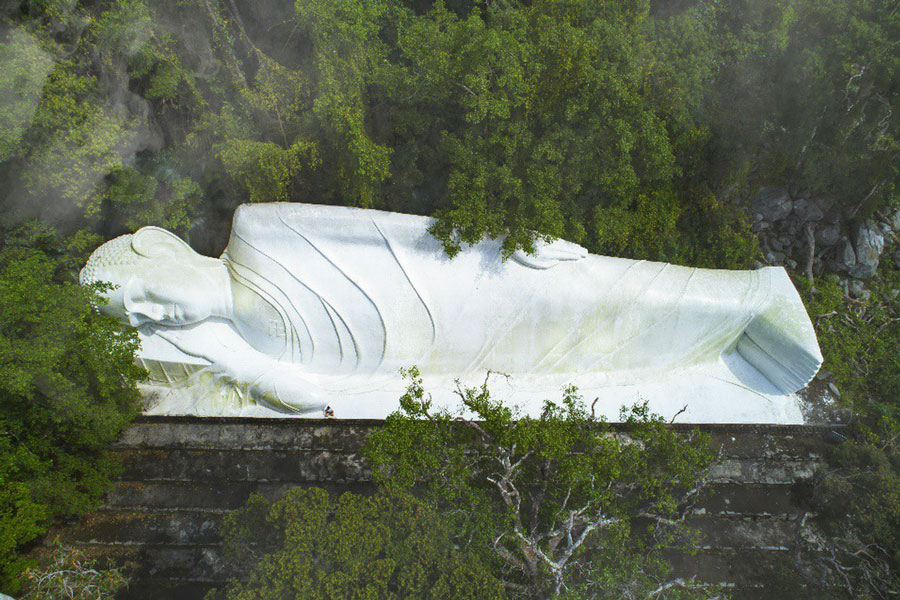
AM: Hiking Ta Cu to explore what breathtaking scenes this mountain can offer. Admire the greatest reclining Buddha and enjoy the aerial view at the top.
PM: Visit Poshanu Cham Tower to learn about the culture and history of Cham. Then move to Fairy Spring to refresh yourself with the beautiful setting of the spot.
If you are a veteran backpacker, please feel free to manage the trip on your own and alter it when needed, else, we recommend you join a tour organized by a professional company, that can free you from hassles and keep you safe throughout the journey.
Phan Thiet is famous for not only seafood but also unique dishes which are hard to be found elsewhere. Our preference of local great special dishes is below. Let’s check them out.
Sun dried squid (Muc mot nang)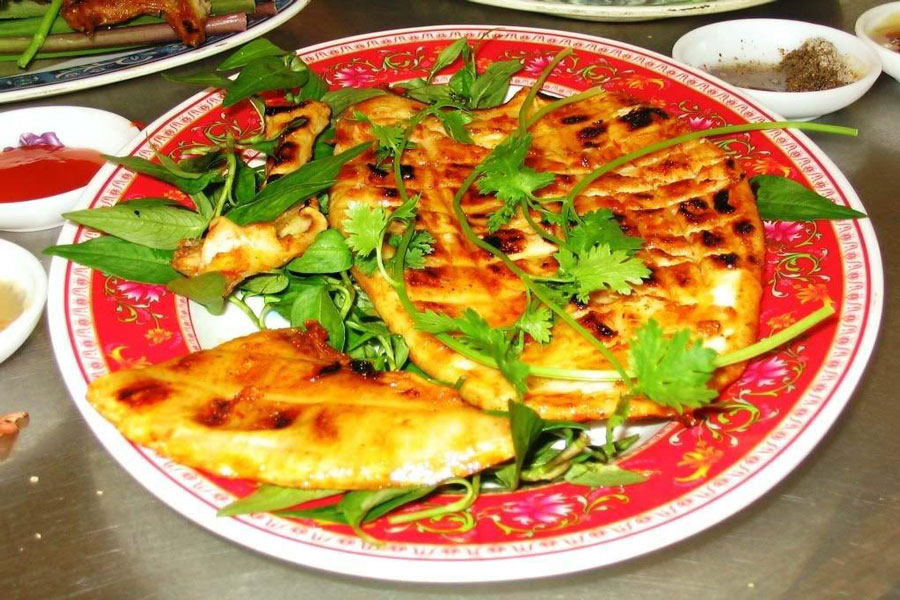
Phan Thiet has one seafood speciality called sun dried squid (Muc mot nang). The big, fresh squid is dried under the sun for one day. When the dried squid is then grilled on hot coals, it turns yellow and exudes a wonderful aroma. The dried grilled squid is then eaten after dipping it into fish sauce with chili.
Seafood salad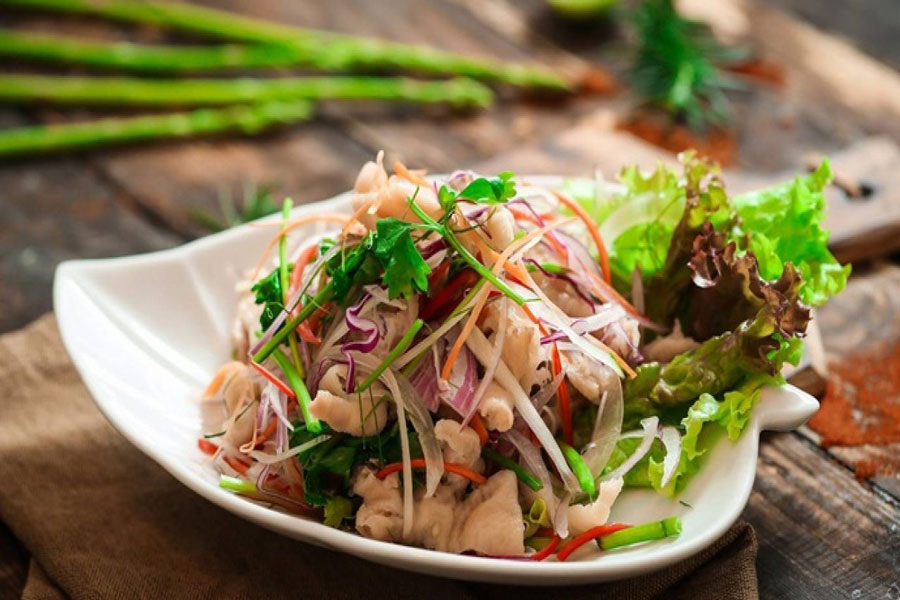
This dish is made using regional fish, such as the White Sardine, the Smelt, and the Smelt-Whiting. Rice paper and vermicelli are served with the salad. Take a piece of rice paper and then put a little of the seafood, some slices of star fruit, raw banana and a little vermicelli onto it. Then roll them all together and dip the roll into the special fish sauce.
Boxfish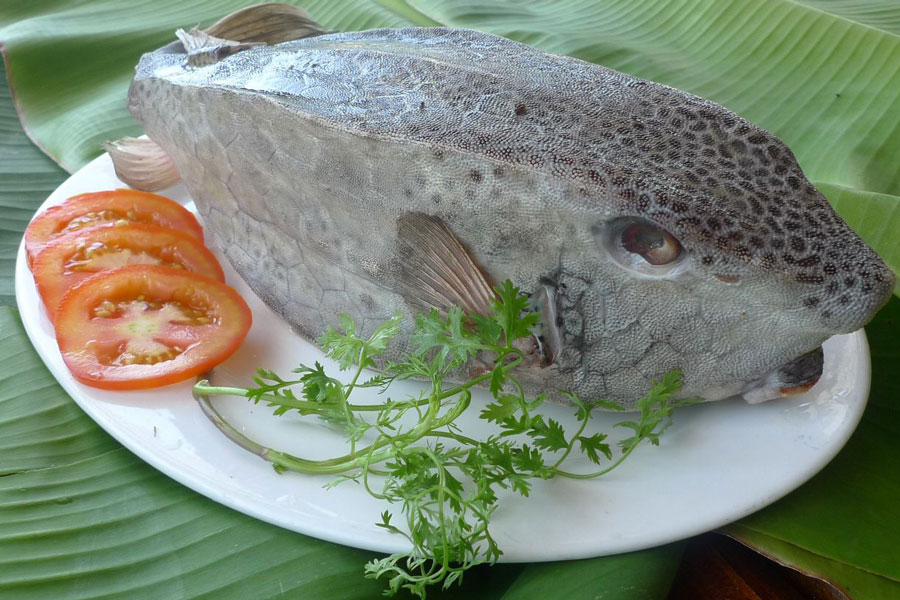
The name of the fish comes from its shape. Its head looks like the head of a cow and its body is in the shape of a box. The boxfish belongs to the pufferfish family and has white flesh with the texture of chicken, without a ‘fishy’ smell. Boxfish is normally cooked on a coal burning stove. Sometimes the stoves are placed on the tables in front of the patrons so that they can grill it themselves.
Tha Hotpot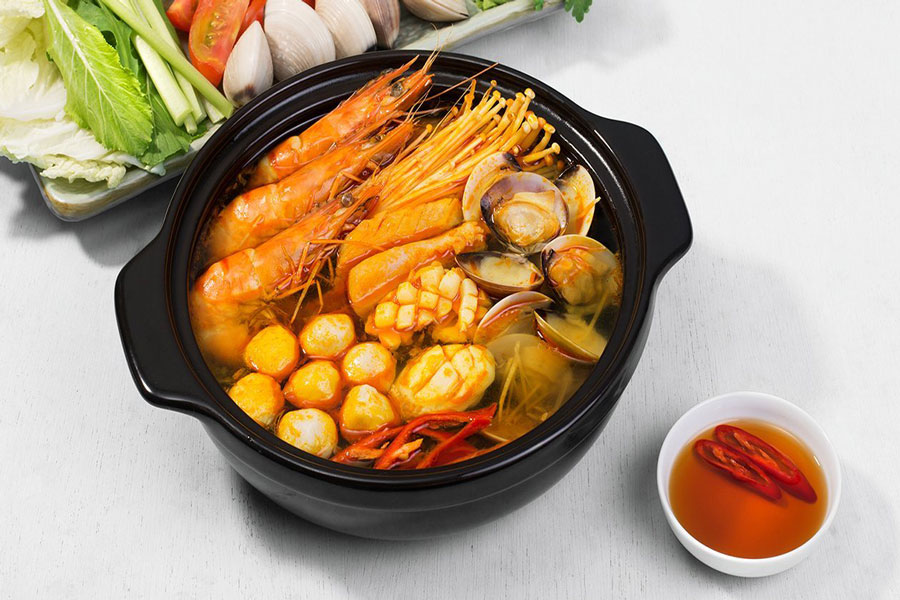
The hotpot is made with sillago or silverside fish and herring and served with the fish in a broth that includes chilli, chopped garlic, ginger, duck eggs, star fruit, cucumbers and spinach. This is a special dish in which people can enjoy not just the flavors but also the five elements of Buddhism. The Buddhist philosophy is that each meal is a balanced harmony combining the five elements: metal, wood, water, fire and earth, which bring health and energy. Equivalent to the five elements are five tastes: spicy, sour, bitter, salty and sweet. A meal must awake all five senses of sight, smell, sound, taste and touch. And finally, include the five colors: white, green, yellow, red and black.
Can Cake (Banh Can)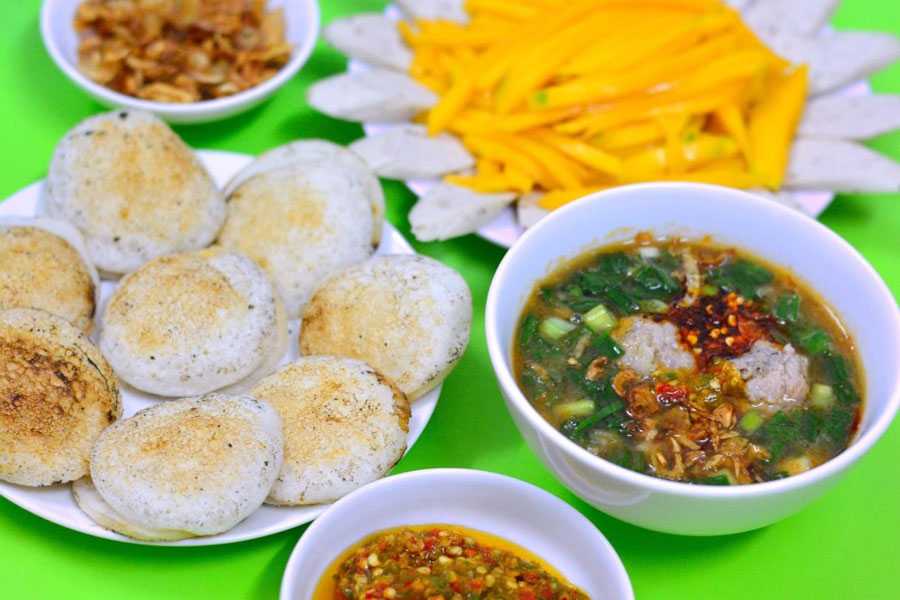
To make this dish, the rice paste, which was made from soaking grains of rice, is crushed into a moist powder. Before pouring the paste into the molds, chopped green onions or chive leaves are added. The best way to eat the rice cakes is while they are still hot. The taste depends on the sauce. The sauce is created by boiling a mixture of a local fish with fish sauce, spices and sugar, and then tomatoes in peanut oil, chilli and fresh lemon are added. The rice cake is then served with herbs, star fruit, green bananas, cucumbers, laksa, basil leaves, sprouts and lettuce. Sometimes locals will add a braised pot of pompano to eat with this dish.
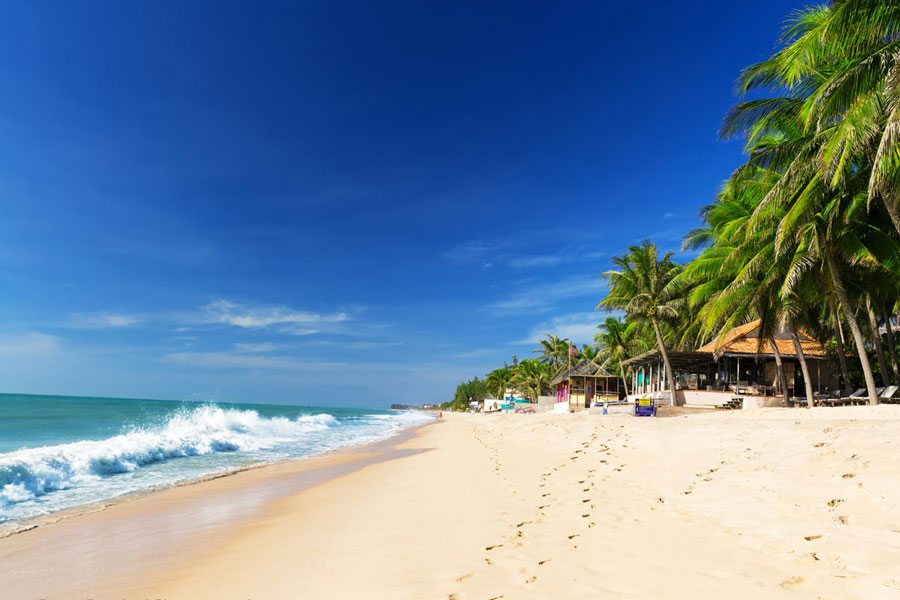
Phan Thiet can be visited all year round but it should be noticed that it often rains heavily in July and August. If coming in the rainy season, the rain may stop you from going off on your adventures as the sand will gradually slide to the river, turning the water into red as alluvium. That is obviously not a good condition for swimming or other activities. Therefore, the ideal time to visit Phan Thiet is from January to May, when nature is in perfect state.
To travel to Phan Thiet, tourists mainly choose by trains, or by bus.
By train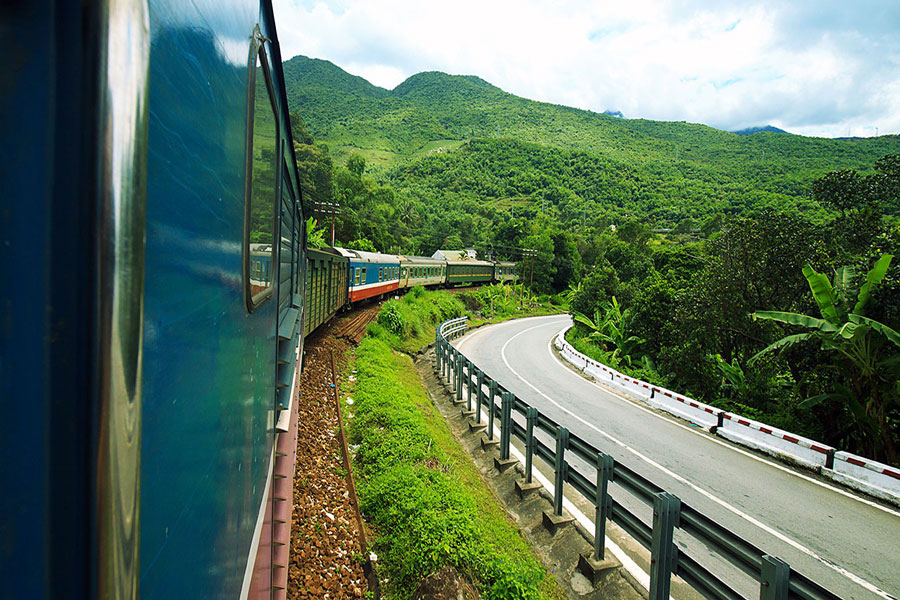
Traveling the distance of 187 kilometers, the daily train takes nearly 4 hours to get to Phan Thiet. Tickets can be bought at the Ho Chi Minh Railway Station from the price of $20. With an air conditioner and a comfortable seat, you can easily relax and enjoy magnificent scenery outside.
By bus
You can easily buy a bus ticket in Pham Ngu Lao Street. There are both daytime and nighttime buses from Ho Chi Minh to Phan Thiet. The travel time often ranges from 5 to 7 hours depending on the road traffic, with fare varies from $15-$20.
Throughout this article, we wish you to have an idea of how to travel to Phan Thiet for your best experience. In case you are looking for your own travel agent, who can offer a wonderful and hassle-free trip to Phan Thiet, please feel free to let us know. We always commit our best to make it your once-in-a-lifetime journey.
 France
France  Spain
Spain  German
German  Italian
Italian 

 Vietnam Tours
Vietnam Tours  Cambodia Tours
Cambodia Tours  Myanmar tours
Myanmar tours  Thailand Tours
Thailand Tours  Laos Tours
Laos Tours